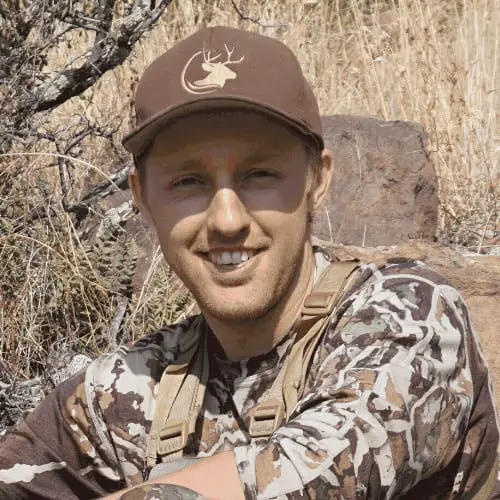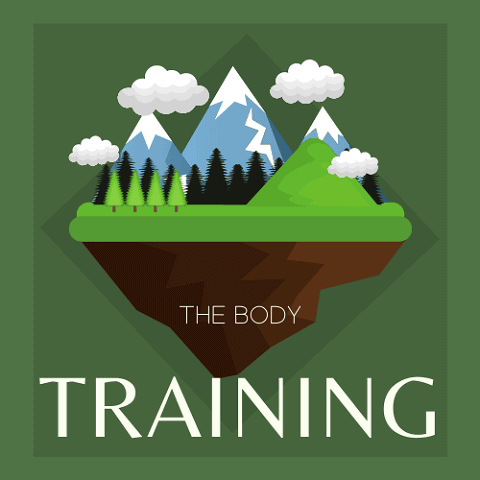Fact checked by Steven Lines, lifelong Hunter and Outdoorsman .
.
Elk are notoriously hard to hunt, as they usually take cover in the dark timber. They tend to spend most of the time, and it’s a safe place for them and bad for rifle and bow hunters alike, so if you want elk out on public land, then pressure is your best bet.
Elks don’t have established places where they spend their lives. They are always on the move. If you want to catch elk, you should get used to timber sneaking. It’s slow, still hunting, but through stands of lodgepole pines. Many hunters enjoy this type of hunting, as it requires patience and resilience.
Nowadays, many hunters avoid hunting in timbers, as it requires timber sneaking, which is much more complicated than glassing a hillside from a distance. Elk are notorious for using thick timber during the hunting season. This helps them to avoid some hunters, but not all of them.

In this post, we'll cover:
10 Tips to Hunt Elk in Thick Timber
Here are some tips from professional hunters that will help you get the best results during your elk hunting trip.
Avoid roads and trails
Elks seek out different pockets of dark timber and rough country. This is where many hunters refuse to go. Many hunters prefer to wait until the end of the season to do their elk tag. The reason is that there is good tracking snow, and all elk around the timberline have been pushed down into the low ground by the deep snow.
There is a low chance of seeing a bull that stays near a road. And it’s good to understand that there is a high chance of meeting someone else with a rifle that will find this bull first. That’s why you must avoid roads and trails when you hunt public land.
You need to be ready to act quickly in timber
Elk turn into a movement in the timber. You need to be very fast and act as quickly as possible. If elk see you but haven’t winded you, you will have at least 30 seconds before they realize you are a threat. This is because they need to check if you’re a threat before taking off. Be ready to make an accurate shot.
Elk choose the top timber, so should you
Professional hunters recommend reading the landscape through an elk’s eyes. If it’s warm outside, it’s more likely that elk will choose high, shadowy cirques. And if it’s cold, elk will choose sunny, south-facing slopes.
Elk feed in the timber where there is enough light to support the grass and shrubs. Elk bulls also like to bed on benches and have access to woods on a steep slope.
Walk slowly at a snail’s pace
You should not run; it’s better to take a couple of steps, then stop and look around. Observe your surroundings and look for anything that might be a sign of an elk. It’s almost impossible to glass into thick timber from a distance; that’s why many hunters use binoculars to notice something that seems out of place.
A great mistake for hunters is assuming that the elk will all be bedded and won’t be standing on their feet in the timber. They may be feeding or milling around before actually bedding down.
Still, hunting can also be described as timber sneaking. To better understand still hunting, just imagine moving so slow that it feels like you’re not moving, almost like a snail. You would want to sneak through the woods so that you can see elk before it sees you.
Here stealth and concentration play crucial roles in the success of your hunt, and on the still hunt, you will need to be extremely slow when you get into the close confines of dark timber.
Start your elk hunting in timber in mid-morning
There are several reasons why you should start elk hunting in the mid-morning. One of the main reasons is wind. In the mid-morning, it is more stabilized as well as prevailing thermals. This will make your hunt easier and add more chances of killing an elk. If the wind direction is not stabilized, you will not be able to sneak into the close range of elk.
The warming thermals have moved to an uphill direction mid-morning, and the wind direction has settled. This helps to keep the wind in the direction of your face.
Don’t forget to use your ears during the hunt actively
Using your senses during the hunt is also crucial. You need to use your hearing. This is because sometimes elk bulls will show their location with a late-season bugle. You should also listen carefully to cows that slowly mew to their calves as the group moves towards the bedding area.
You should also use your sense of smell. Elk have a potent, horse-stable smell. This odor is one of the main signs that elk are close to you. Also, it’s no secret that you should be very quiet during your hunt. However, don’t worry if you snap a twig or two. It can be perceived as a common noise in the timber.
Check the food sources in the nearest area
Water is an essential aspect. Of course, timber that stands with springs will attract elk. They will travel for food and water, but they try to minimize their exposure as much as possible during the rifle season.
That’s why many professional hunters recommend looking for timbered benches close to water and food. These are flat spots on timbered slopes. Timbered benches are ideal bedding areas, as elk are huge and avoid lying on a steep pitch. These bedding benches may vary in size.
Hunters should also be able to study topographic maps of the area. Find the areas where the tight contour lines on a steep slope spread out, which show a flat area. Also, study the woods.
Look for small benches that elk use and try to find concentrated numbers of droppings, tracks, or beds. This is a direct sign that elk use that area frequently.
Think of the ways to approach elk beforehand
Your approach to elk is a very important aspect of hunting. If the thermals move uphill, you should approach the area you think where the elk are, from above or at least at the same elevation, but this is not a good option.
If the thermals move downhill, which usually happens in the evening when the air temperature drops, you will need to focus on the uphill side. Elk can easily survey the downhill landscape, making it a lot more difficult to kill them from below.
Never ignore the wind
Once again, the wind is significant. Strong and steady winds may help to cover the noise and the scent. Moreover, elk tend to hold tight in the thick timber on windy days. That’s why hunters like to choose windy days for elk hunting. It makes it easier to slip in for a shot.
If the wind is blowing at your back, then the chances of killing an elk will be the lowest.
Frequently checking the wind direction is crucial. As the wind direction changes, you should change your approach as well.
You also need to realize that even if you’re able to plot the elk hunt’s direction based on the wind, timber stands can be huge. They can stretch out for miles. This is what makes the elk hunt extremely difficult and daunting. And the majority of timber stands may not even hold elk.
But fortunately, hunters know that elk regularly use small areas within large stands of dark timber for certain reasons. Green grass can grow in timber, and elk always choose lush green grass over brown grass, as food is the most important.
Hunt in timber with unslung rifle and scope set on the lowest power
If you find elk in the thick timber, it’s most likely that elk are already well within the rifle range. That’s why hunting in the timber with rifles unslung and with the scope set on the lowest power is recommended. Here you must be ready for a quick off-hand shot on an elk that may suddenly appear at fifty yards.
If you sneak up on elk that are bedded and unaware of your presence, move exceptionally slowly into your shooting position. Use the nearest tree trunk for a shooting rest if you are standing.
When you shoot bedded animals, it can be very tricky. That’s why you must ensure you’ve got a clear shot through the vitals. And avoid severe quartering angles and stick with broadside shots on bedded elk.
If you can not do the shot due to some bad angles or if the animal is screened by trees, other vegetation, or another elk, that’s when you need to get more comfortable and wait till the elk stand up.

Steven Lines is a hunter and outdoorsman from Safford, Arizona, USA. Since he was a child, he has been hunting and fishing and has over 20 years of outdoor experience. Steven works as a hunting guide in Arizona during his spare time and runs a Youtube channel dedicated to sharing his outdoor adventures with others.
dedicated to sharing his outdoor adventures with others.
Sources
- https://www.themeateater.com/hunt/elk/elk-hunting-the-lost-art-of-the-timber-sneak

- https://www.rokslide.com/forums/threads/hunting-dark-timber.39386/

- https://cpw.state.co.us/learn/Pages/EHU-CH1-L06.aspx


